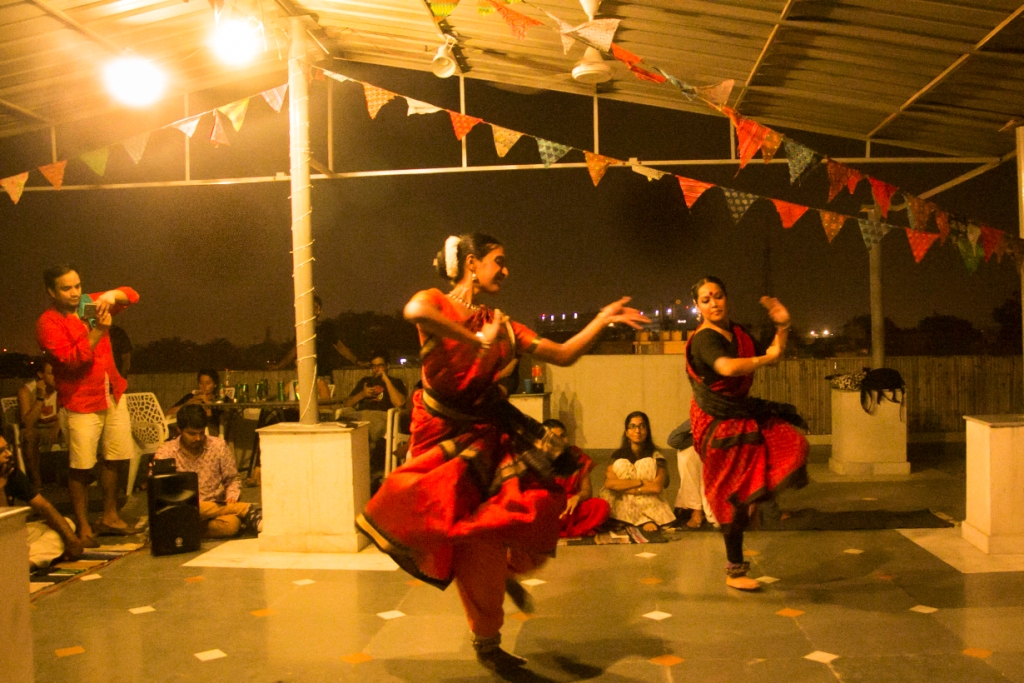How Delhi's Alternative Art Movement is Democratising Art

Not long ago, theatre and music performances were limited to auditoriums in a select few places in the city. However, shrinking spaces, both in terms of affordability and creativity is compelling artistes to look for innovative solutions. Today, several experimental art spaces dot Delhi’s landscape.
When Manu Mathew started ‘House Concerts Delhi’ with a group of friends in a basement in Gurugram about two years ago, little did he know that it would become a movement of its own.
The idea of a house concert is that artists or friends of artists provide their house for venue, following which an event is created on social media. Interested people register in advance and pay whatever they can afford after the event.

The concept has gained popularity and even music lovers are warming up to the idea of opening their homes to artists and an audience.
“Initially, we wanted to give upcoming singers and songwriters a place where they can perform and receive instant feedback. Now, established artists, wanting to connect with a more intimate audience, also perform at house concerts,” says Mathew.
He admits to limitations in terms of funding and logistics but remains optimistic about the rise of new performance spaces. “When you’re doing something that is not solely driven by profit, the community is more open and generous in its support,” he adds.

Space crunch and exorbitant rent rates of auditoriums in the city has pushed artists to explore easily accessible places to showcase their art. Art is slowly moving out of the confines of prosceniums and is being exhibited in public spaces.
Aiming to provide succor to artists looking for spaces to perform, theatre artiste MallikaTaneja and Odissi dancer Manishikha Baul began ‘Lost and Found Trust’, an initiative that brings performance arts to the neighbourhoods. The duo has curated performances in parks, rooftops and community centres in residential localities across Delhi.
Taneja feels that the root of the movement lies in the fact that artists do not get space to perform. “The way the arts are organised in the city, is very unfriendly to independent artists. So, artists have started to look for alternative ways of reaching out to their audiences,” she says.
She adds that the response of the people has been deeply encouraging and each performance has lead to new discoveries. But, performing in public spaces comes with its own set of challenges.
“You never know who is going to watch what and get offended. There is a need to understand neighbourhoods before programming. We also have to see if the content is children friendly.” Taneja explains.
Because the shows are not ticketed, sustainability of such spaces is an issue. The biggest problem however is difficulty in accessing public spaces for art.
“Sometimes, it becomes impossible to make residential welfare associations understand why they must let us use the space for a free activity for their residents. But at the end of the day, all these are creative challenges, and as artists it just helps us push boundaries,” she adds.
Nestled inside the congested, working class locality of Shadipur, Studio Safdar is a unique space that fosters the confluence of theatre and activism. It was founded by late playwright Safdar Hashmi’s theatre group Jan Natya Manch, with an objective of providing creative resources to theatre groups. Adjacent to it, is the May Day book store, one of the few bookstores in West Delhi.
From its choice of location, to the artworks and photographs adorning its walls, there are many things that are unconventional about Studio Safdar.
“The main impulse was to create a well-equipped rehearsal space for theatre groups. However, we didn’t want it to be in an elite or fancy neighbourhood. We wanted an area that was diverse socially, in terms of language, culture and communities. This is very much the case with Shadipur,” says Sudhanva Deshpande, a theatre actor and the executive director at Studio Safdar.
He feels art has become so unprofitable that even dedicated spaces are looking for more commercial options. “Many established theatre spaces in the city have been turned into coaching centers because it earns owners more money. Besides affordability, another aspect is that many of these spaces feel impersonal,” adds Deshpande.
With audiences beginning to look for experiences that are not standardised, alternative spaces are mushrooming in the city. Though, conventional auditoria complexes continue to flourish, artists believe that these new-age spaces are democratising the way art is exhibited and viewed.



